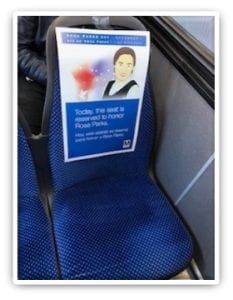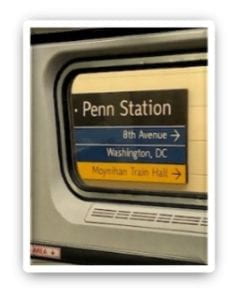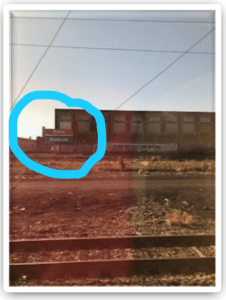About Rachel’s Fullbright Blog Series; Rachel Simon-Kumar was awarded the NZ Fulbright Scholar Award for 2022 and will be at Georgetown University, Washington D.C, between October 2022 and February 2023. During this time, she will be hosted at the Department of Women’s and Gender Studies, working with Prof. Nadia Brown. She will exploring comparative perspectives on intersectionality among Ethnic Minority Women in Politics in New Zealand and the United States. Her occasional blogs will reflect on gender, race and politics during her Fulbright journey.
There is much you learn about a place when you travel on public transport.
The users of public transport, for instance, are an interesting study. On my regular commuter travel through Virginia and DC, some of these impressions – very speculative, I might add – emerge. The professional dapper commuters on the morning metro contrasts sharply with the exhausted-looking, minority women on the late evening local bus clutching numerous and over-filled shopping bags. I have been told to be wary of public transport generally here in the US but each time I have been on it, the diversity of languages – Spanish, Arabic, South and East Asian as much as English – is a remarkable reminder of multicultural richness of this country. I have not had reason to be wary thus far.
But public transport is also a space of politics. Like libraries and parks, it is part of democracy’s shrinking public spaces.
But to my delight – and far from shrinking – I also have found it be a space of vibrancy, commemoration, and, even, citizen advocacy and activism, both within the carriages of the transport itself or positioned outside so as to specifically address those taking it. I thought I would share some pictures from my recent travels on public transport in the US.
December 1st is observed as Rosa Parks Day and, in homage to her civil rights resistance to segregation on public transport, a seat was left empty on public buses. I took several buses that day and no one, not even in packed buses, sat in her seat.

More recently, I took a train from Washington DC to New England – a total of 8 hours during which I was enthralled by shifting mosaic of landscapes, peoplescapes and socialscapes.
My journey started at Union Station (see below) with its magnificent and rather breathtaking architecture. Union Station and Amtrak have colourful histories, and despite the convenience and cost-effectiveness of flying, I was surprised to see the station and trains quite packed. My train had an early start, at 7.30 am, and even at that hour, there were substantive numbers boarding local trains.

The station space was unexpectedly a fount of public messaging (not merely commercial advertising) as, indeed, were the range of messages – from straightforward public health promotion communication to provocative activism from interest groups. This one ‘Interrupt the Conversation about obesity’ was quite striking in its re-construction of Obesity from victim-blaming to an outcome of social determinants.


There was also one for instance informing the public and citizens of their health rights targeted against the medical lobby, which I couldn’t get a picture of (watch this space as I go back to get one).
The train ride itself on ‘The Vermonter’ – as we trailed through Maryland, Delaware, New Jersey, New York, Connecticut – was illuminating.
Martin Luther King, Jr., was a popular choice for a street name, I found, visible even from a train. As we chugged along, I could also see why the term ‘both sides of the track’ has relevance – tree-lined streets from windows on one side of the train juxtaposed against more decrepit buildings on the other. For a country represented as generally Islamophobic, I’m sure I saw two mosques on the route. Managed to click one.

Cities, like everywhere, proudly displayed their identity through captioning and city slogans, some current and some a reminder of the past. Trenton, en route, went by the tagline ‘Trenton Makes, The World Takes’, which as it turns out was thought up in 1910 when it was the center of factory production and supplying. Today, it has lost its industrial ballast but the memory of its heydays continues to define it. Here is a one-minute audio story on Trenton’s name.
Penn Station is real place! It’s not just in the movies like Motherless Brooklyn (Great movie. And Hollywood is NOT where I get my information on America. Just saying.)

Public transport serves many purposes. Of course, we hear a lot about the benefits of trains and buses from an environmental sustainability perspective and in public discourse that seems to override any other focus.
Public transport does serves other purposes as well; it’s contribution to social sustainability is often understated, even among those who ardently advocate its use. As Magnus Mackaldener says in this piece, “for many people, commuting via public transportation is the only time when they are confronted with those that are dissimilar and different”. On and through public transport one can see – as I did – diversity of peoples and places, ideas and identities, histories and futures, a sense of wholeness and difference, existing in varied relationalities.
If we want to maintain socially cohesive societies, making public transport affordable, accessible, as well as attractive is undeniably an important public good.
As we rode closer to my destination, I took a picture of a massive billboard calling to save Amtrak – and given all I’d seen till then, I couldn’t agree more.

Recent Comments